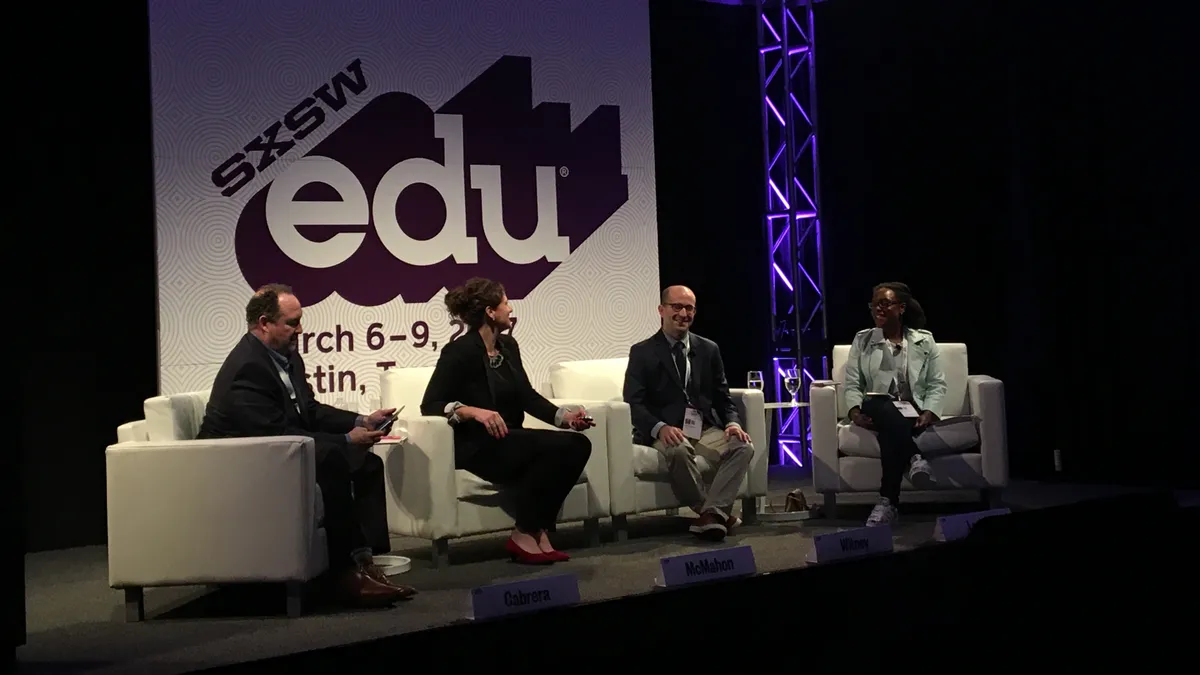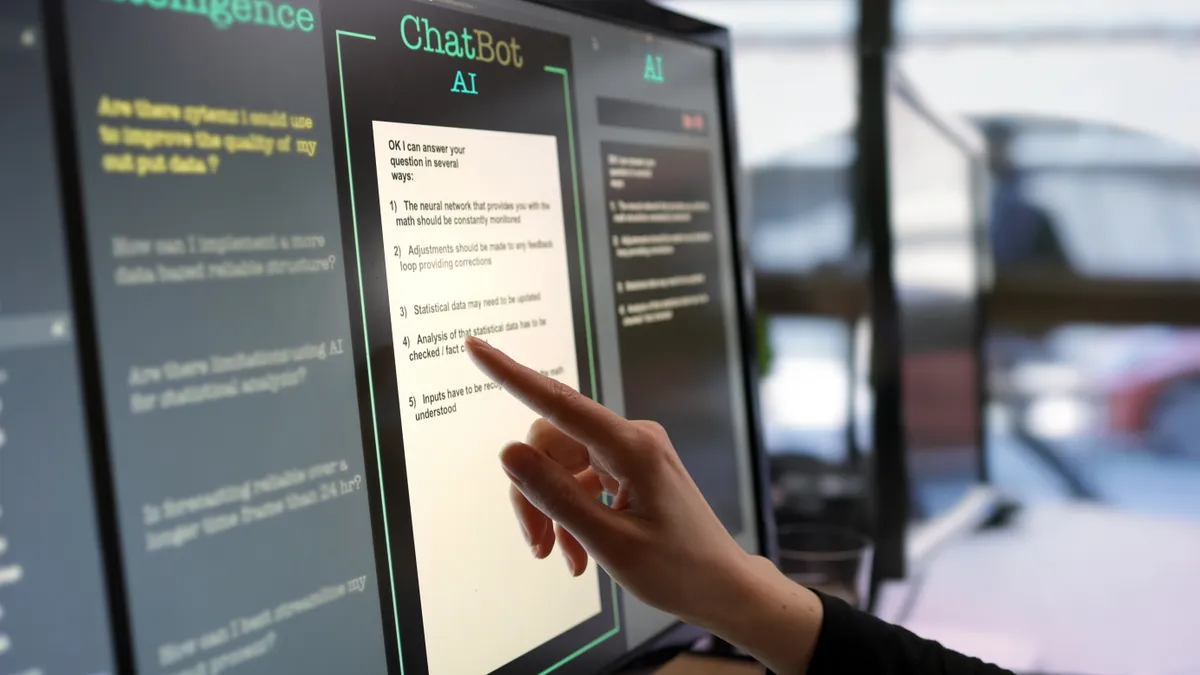In a panel at last week's SXSWedu, moderated by The Teacher's Guild Director Molly McMahon, a trio of two Texas K-12 administrators and a district teacher of the year from Georgia discussed the benefits of letting teachers drive innovation.
Spring Branch Independent School District Associate Superintendent Elliott Witney, El Paso Independent School District Superintendent Juan Cabrera, and Gwinnett County Public Schools Teacher of the Year Valerie Lewis have all seen firsthand how schools and districts can transform when teachers are given more input and agency.
But what exactly is innovation in this context? According to the panelists' responses, it is “something that is problem-solving in nature intended to provide value,” anything that disrupts normalcy and embraces creativity, and efforts to strive to change your teaching style to improve engagement and/or to improve the opportunity for understanding and retention of content. The latter, from Cabrera, was the "less sexy definition," he admitted.
"The truth is teaching is harder than rocket science because you have a lot of individually unique children," said Witney.
"If we’re bored to death, we’re not giving our kids the best of us," added Lewis.
What does teacher innovation look like?
Witney said that, in his district, his daughter's kindergarten teacher, Kara Ayala, exemplifies teacher innovation. A teacher of the year at her school, Witney said Ayala did "really interesting empathy work" with her kindergartners that spiraled into even greater ideas around building 21st Century skills at the very beginning of a child's schooling.
Cabrera cited Jill McGee, his district's elementary teacher of the year last year, who spent her summer volunteering to be in the first cohort of an active learning project aimed at training 4,000 teachers to go from being lecturers to facilitators over the next four years. He also talked about how she was excited but worried about her efforts to rearrange her classroom layout. "I'm so impressed by her and thankful that we have many, many people like that in the profession that are willing to be at the top and want to get better all the time," he said.
Providing her first-hand perspective on innovating as a teacher, Lewis mentioned a number of things she has done, including a living museum for Black History Month, but focused primarily on her "Ed Obstacles" creation. Inspired by her 9-year-old son's obsession with the American Ninja Warrior TV series, Ed Obstacles was an effort to take the excitement he expressed for the show and combine its physical aspect with academics. Working with Atlanta Maker Faire, she was able to make it reality. Students get to design the obstacle courses and compete in teams and pairs, and now they ask regularly when they can design again and talk about what they're thinking of designing for the next Ed Obstacles.
How can administrators inspire teacher innovation?
All three panelists agreed that "rockstar" building leaders are key to fostering teacher innovation, as are creating the time and energy and space to facilitate that.
Cabrera lamented the difficulty in transferring or scaling things that work in charters like KIPP to larger public schools, as well as the tendency for more distractions in large school districts. But he added that he wants to create a holistic learning environment that kids and teachers alike love, and that principals and other building leaders must nurture their teachers and facilitate passion and the desire to innovate. As a superintendent, he asks prospective principals about the culture they want to build, how they want to go about doing that and what kind of examples they can provide.
Lewis noted that while you can't control time, you also don't have to beg teachers to show up if they're given personalized professional development options where they can focus on what they want, adding that the ed world could stand being less stiff.
If the panelists were each given a grant to do so, how would they use it?
As the panel neared its end, Cabrera, Witney and Lewis were asked how they'd invest $1,000 to facilitate teacher innovation. Before they answered, however, the audience was polled, with 59% choosing “Redesign teacher training,” 55% picking "reimagine professional learning," 38% favoring increases in salary, 28% for funding teachers, 17% for funding schools, and 10% for invest in teacher-centered tech.
Of the panelists, Lewis answered first, saying she would invest her money in making sure a teacher advisory counsel has a seat with the administrators in weekly meetings, or on a swag storage space/teacher lounge or personalized PD for educators.
Witney said a majority would be invested in making teacher professional development time more relevant to them, as opposed to just having them listen to someone drone from a slide to accrue professional learning hours that can be exchanged for time off. He'd also want to find ways to invest in game-changing ideas, like what he saw at one school where a principal lowered the number of fights on campus by launching intramural sports.
Finally, Cabrera said he’d ask his teachers how to invest the money, getting more feedback instead of just making top-down decisions.








 Dive Awards
Dive Awards














